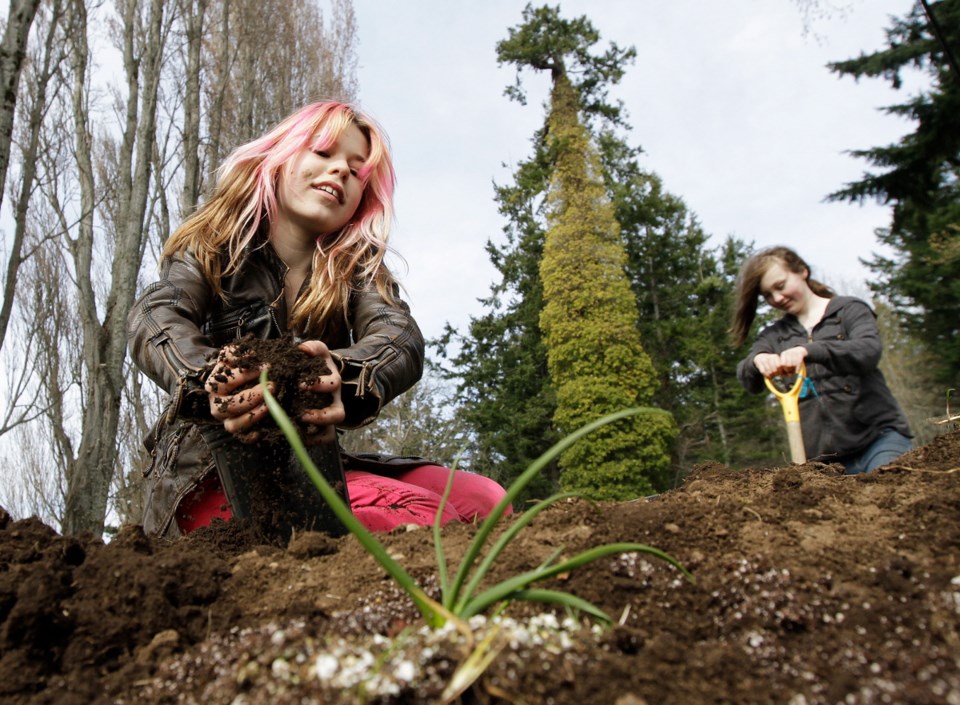Soft piles of soil near the waterfront at Royal Roads University hold hopes for the future and a link to the past for a dozen students from Shoreline Middle School.
Using traditional digging sticks, aided by more modern shovels, Grade 6 students burrowed into the mounds of earth on Wednesday and planted bulbs of common camas — a plant that was once ubiquitous around southern Vancouver Island.
It was also a food staple for First Nations.
“The camas would be steamed. It’s our potato,” said Ken Elliott of Cowichan Tribes, owner of a native plant nursery.
Elliott has provided dozens of camas bulbs for the project, which is being co-ordinated by the Centre for Livelihoods and Ecology at Royal Roads, and he is hoping to inspire a curiosity about the past.
“I am encouraging the kids to go back to their family elders and see if they remember a plant they used for food, a plant they used as a tool and a plant they used for medicine,” said Elliott, who has watched traditional use of many plants disappear within four generations.
As Elliott supervised the planting — in an area where First Nations would have traditionally harvested clams and then camped on shore where camas, chocolate lilies, nodding onions and yarrow were planted — he also tried to instill respect for the land.
“Before harvesting, they would pray and thank the Creator and thank the bulbs,” he said.
It is hoped the camas will bloom in June, displaying its bright blue-purple flowers, and that a harvest might be possible next year.
Only camas with blue-purple blossoms are edible. “Cream colour is the death camas, and that means it’s poisonous,” Elliott said.
Cooking the bulbs can be tricky, he said.
“If it is steamed too quickly and the temperature is too high, all the nutritious value gets cooked out. If you want them for lunch today, you would start steaming them at lunch yesterday.”
Tim Brigham, Livelihoods and Ecology co-ordinator, said Shoreline and Songhees First Nation have enthusiastically embraced the traditional plant management project, which has been funded by a $5,000 contribution from Vancity Credit Union.
“The kids are totally engaged,” he said.
“We wanted to create appreciation for something that used to be all over Victoria. We’re hoping, if it is successful, other communities will get on board.
For students, the chance to dig in the dirt on a spring day was almost reward enough for taking part in the project.
“I like coming out here to plant,” said 11-year-old Victoria Fisher. “It’s kind of fun and I like listening to First Nations stories.”
Taylor Foster, 11, liked digging and the chance to explore the adjacent forest.
“And I like listening to First Nations music,” she said.
Teacher-librarian Jane Spies said the group includes First Nations and non-aboriginal students.
“We opened it up to whoever was interested,” she said.
A similar project is being considered for the school, Spies said. “This is a neat connection between the kids, elders, Royal Roads and Vancity.”



